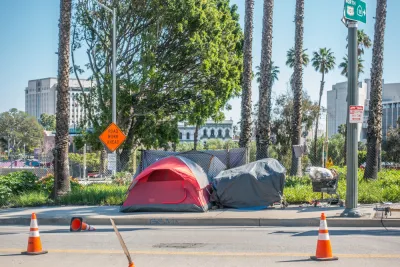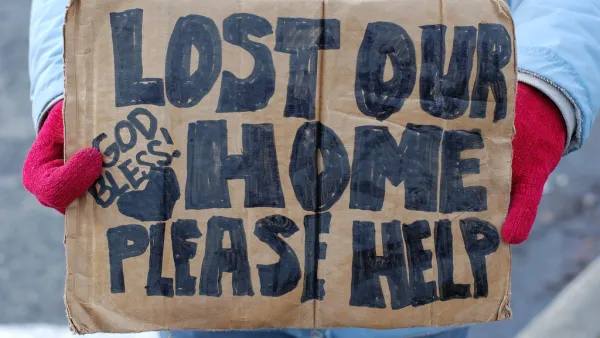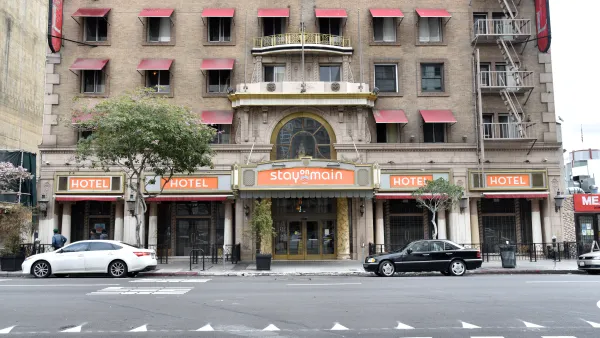There won't be many places left to sleep for the massive population of homeless living in the city of Los Angeles.

"A plan under consideration at City Hall would ban sleeping on streets and sidewalks within 500 feet of schools, parks, day-care facilities and some popular venues, eliminating at least a quarter of Los Angeles for homeless people trying to bed down at night," according to an L.A. Times feature by Matt Stiles, Ryan Menezes, and Emily Alpert Reyes.
The article includes an interactive map to illustrate the scope of the law, created by analysis performed by the L.A. Times team. In the whole city, there are 836 parks, 1,482 public and private schools, 1,161 day-care centers, nine special venues, and 43 homeless services that would be subject to a 500-foot buffer if the law is approved.
"Taken together, the buffers cover 124 square miles, about a quarter of the city," according to the article. "The estimate almost certainly understates the proposal's full potential."
The map allows analysis in the aggregate as well as at the neighborhood level. The article provides case studies in Venice, Hollywood, Koreatown, Downtown, Skid Row, and more.
If approved, the law would be the latest legal setback for the rights of the homeless to sleep on the streets. Los Angeles recently prohibited sleeping in cars, vans, and RVs, for instance.
FULL STORY: L.A. might ban homeless people from sleeping on many streets. What about your block?

National Parks Layoffs Will Cause Communities to Lose Billions
Thousands of essential park workers were laid off this week, just before the busy spring break season.

Retro-silient?: America’s First “Eco-burb,” The Woodlands Turns 50
A master-planned community north of Houston offers lessons on green infrastructure and resilient design, but falls short of its founder’s lofty affordability and walkability goals.

Delivering for America Plan Will Downgrade Mail Service in at Least 49.5 Percent of Zip Codes
Republican and Democrat lawmakers criticize the plan for its disproportionate negative impact on rural communities.

Test News Post 1
This is a summary

Test News Headline 46
Test for the image on the front page.

Balancing Bombs and Butterflies: How the National Guard Protects a Rare Species
The National Guard at Fort Indiantown Gap uses GIS technology and land management strategies to balance military training with conservation efforts, ensuring the survival of the rare eastern regal fritillary butterfly.
Urban Design for Planners 1: Software Tools
This six-course series explores essential urban design concepts using open source software and equips planners with the tools they need to participate fully in the urban design process.
Planning for Universal Design
Learn the tools for implementing Universal Design in planning regulations.
EMC Planning Group, Inc.
Planetizen
Planetizen
Mpact (formerly Rail~Volution)
Great Falls Development Authority, Inc.
HUDs Office of Policy Development and Research
NYU Wagner Graduate School of Public Service





























